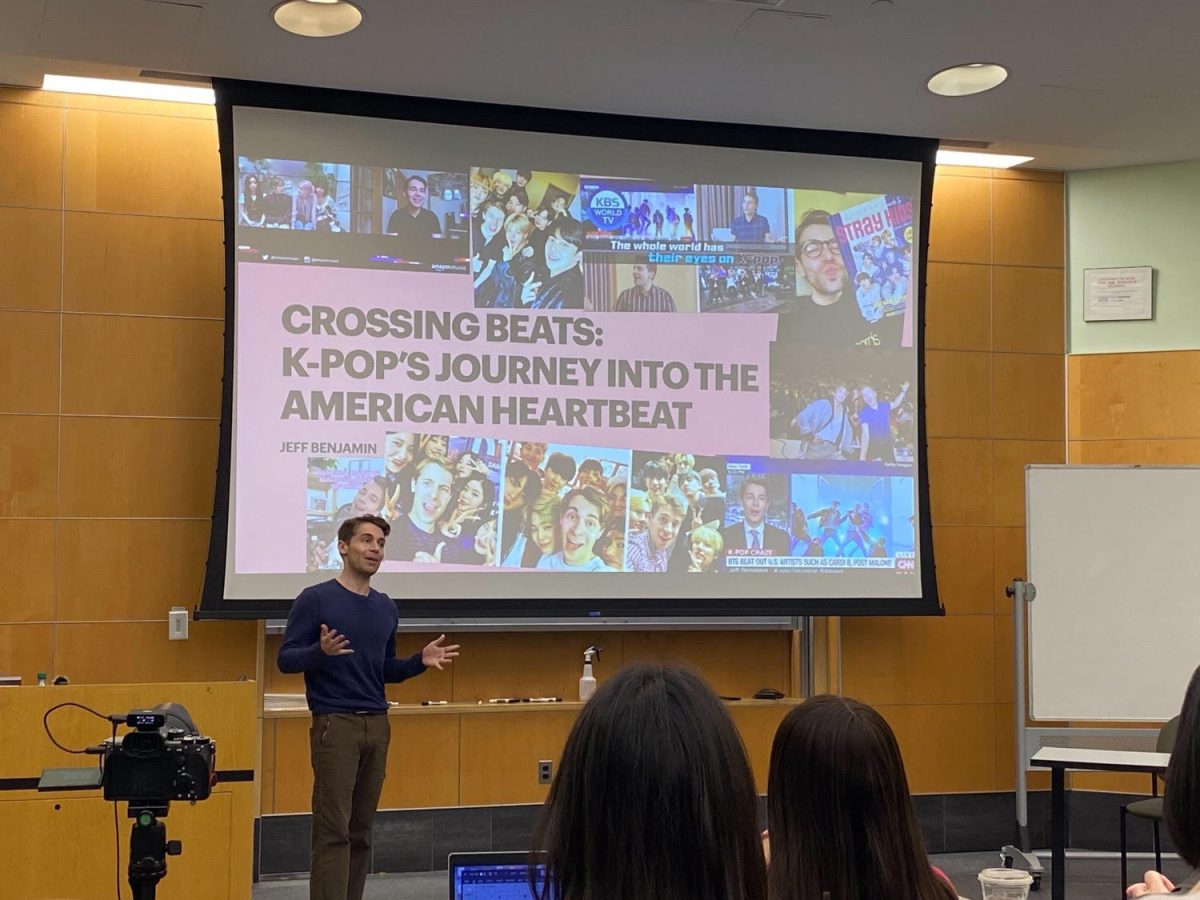
Students strolling through the Charles B. Wang Center can see and learn how Korean society has evolved over the last few centuries with the current art installation.
The exhibition, titled “The Power and Pleasure of Possessions in Korean Painted Screens,” displays traditional as well as contemporary perspectives of Korean society in 35 multi-panel “chaekgeori” paintings. “Chaekgeori,” which loosely translates to “books and things,” was one of the most popular and enduring art forms of Korea’s Joseon Dynasty (1392-1910).
Many of the works are part of this “chaekgeori” genre. These pieces focus on the importance of books and the desire for higher social status and wealth.
“From the exhibition, audiences will learn that people of Korea paint their desire for learning,” Jinyoung Jin, director of cultural programs at the Wang Center and curator of the exhibition, said. “Books are not only valuable as physical entities, but also are desirable commodities and powerful and complex modern socio-political apparatuses.”
This exhibition also includes a diverse group of artists who took the traditional art form and added a new twist by incorporating aspects of modern societal values. These paintings depict how Korean society today, although still embracing the scholarly virtues of the Joseon era, is largely focused on consumerism and material goods.
Two adjacent paintings by Stephanie S. Lee near the entrance of Jasmine Dining show ruby red and emerald green books on intertwined shelves. Books were the traditional objects to be depicted on these kinds of shelves, but Lee’s decision to replace them with luxury items in these two paintings symbolizes the importance of materialistic possessions in modern Korean society, according to the paintings’ description.
“Modern examples by Stephanie S. Lee, Seongmin Ahn, Kyoungtack Hong [and] Airan Kang… shine a light on Korea’s diverse contemporary society, a society that, from the Confucian Joseon era to the hyper materialistic culture of today, is in constant flux,” Jin said.
Thousands of mini figurines including nude dolls, Pikachus, chess pieces, snakes and even a Teletubby sit atop thousands of colorful books in Kyoungtack Hong’s “Library 3,” another contemporary painting in the exhibition. Jin recommends this attention-grabbing piece to exhibition guests.
“Whereas in traditional ‘chaekgeori’ paintings objects take on a privileged aura, worthy of admiration and rising to the level of beauty, in Hong’s paintings the materials of old yield to plastic, mass-produced disposables and impersonal objects,” Jin said. “Hong reminds viewers that there is more to life than the ownership of uncountable objects that possess no value.”
Another striking piece is Airan Kang’s “Digital Book Project,” located on the ground floor of the Wang Center. Silhouettes of traditional books contained in two glass cases glow in neon colors. Kang’s piece depicts how physical books have fused to become ephemeral digital objects that hold knowledge and power, according to the work’s description.
One student who visited the exhibition believes the piece represents a more negative aspect of how books have evolved in modern society.
“I feel like books have become more of just objects, more for decoration and not really used for knowledge or reading much anymore,” Ann Woltke, a junior social work major, said. “Books are powerful but the sculpture [Kang’s ‘Digital Book Project’] kind of uses the books as a display, you know.”
The exhibition began on Sept. 29 and will remain on display to the public through Dec. 23.











